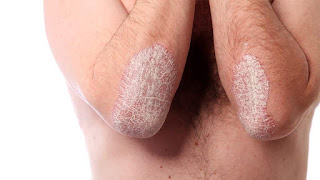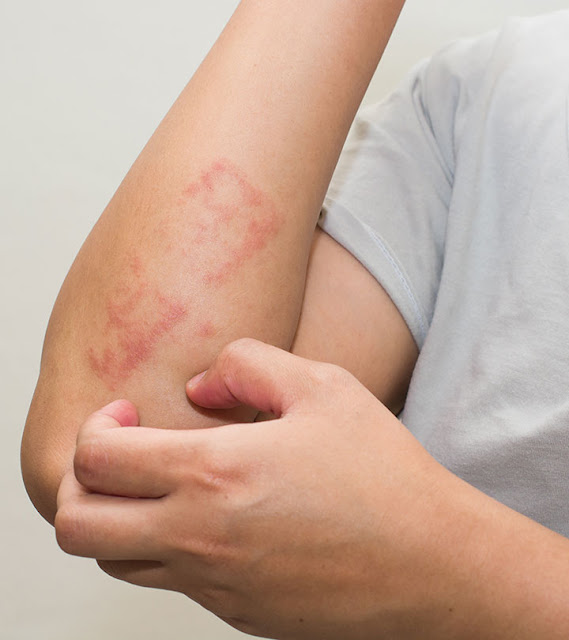WHAT IS PSORIASIS AND WHAT DOES IT LOOK LIKE???
Psoriasis is a chronic, non-contagious skin condition caused by the over-active immune system. On the skin, it appears as plaques of thickened, scaling skin or red scaly patches on the skin. The excessively rapid proliferation of skin cells gives an appearance of dry flakes on the skin.
Psoriasis affects almost 2% of the world population and has a higher incidence rate in a temperate climate. It can appear at any age however in 75% of patients it occurs before the age
of 40 years.
of 40 years.
It most commonly occurs on knees, elbows, and scalp but can also appear on torso, palms and soles of feet.
Types and how it appears
- Chronic Plaque Disease: It is the most common variety-affecting majority of people. It appears as sharply defined, pinkish red (erythematous), plaques covered with silvery-white scales and symmetrically distributed. The degree of body surface area involvement can vary from limited to extensive.
- Guttate Psoriasis: Lesions are small discrete papules and plaques. More commonly seen in children and adolescents and is frequently preceded by upper respiratory infection.
- Palmoplantar psoriasis: psoriasis affecting the palms and soles only.
- Psoriasis of Scalp: Well-defined reddish patches, usually extending beyond the hair margin and showing severe powdery thick scales.
- Flexural psoriasis: Psoriasis confined to the body folds- underarms, behind the ears, infra-mammary area etc
- Nail Psoriasis – very commonly affected. Fingernails are more common than toenails. Pitting of nails is most common. Thickening of the nail bed, loss of transparency and whitish, crumbled and poorly attached nail plate may be seen.
- Erythroderma: is characterized by generalized redness and scaling involving the entire body with no islands of normal skin. Severe variant may require hospitalization.
- Pustular Psoriasis: It is characterized by white pustules (lesions of noninfectious pus) surrounded by red skin. The pus consists of white blood cells. It is not an infection, nor is it contagious. Pustular psoriasis can occur on any part of the body but occurs most often on the hands or feet.
- Psoriatic Arthritis – 5 to 30% of patients have associated arthritis. Risk factors for arthritis are – severe psoriasis, early onset of psoriasis, female gender, multiple joint involvements, genetic predisposition and early X-ray changes in joints. Nail changes are often associated with psoriatic arthritis.
If you live in Mumbai or nearby areas and are looking for the best dermatologist in Mumbai, you must visit the clinic of Dr. Sanjeev Mulekar. He offers clinically approved and best Psoriasis Treatment in Mumbai.
Visit www.mulekarclinic.com to book an instant appointment and get more details of his services.
Clinic Address: Unit No. 142, 1st Floor, Laxmi Plaza, Laxmi Industrial Estate, New Link Road, Andheri (W), Mumbai, Maharashtra – 400053
Contact: 9820432532
Source: https://www.mulekarclinic.com/what-is-psoriasis-and-what-does-it-look-like




Comments
Post a Comment